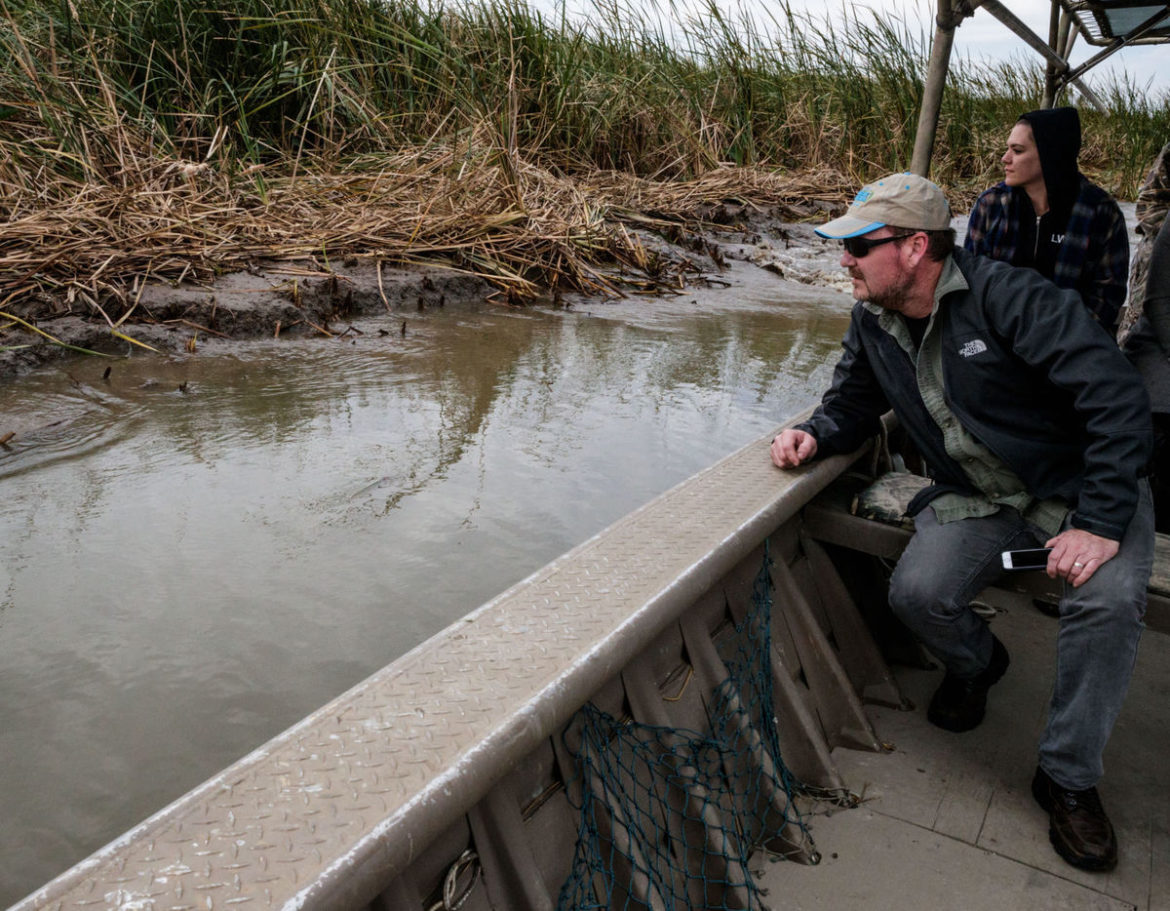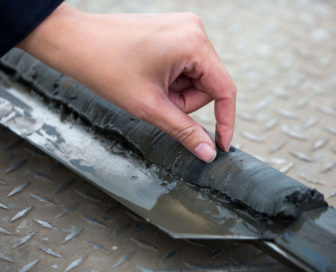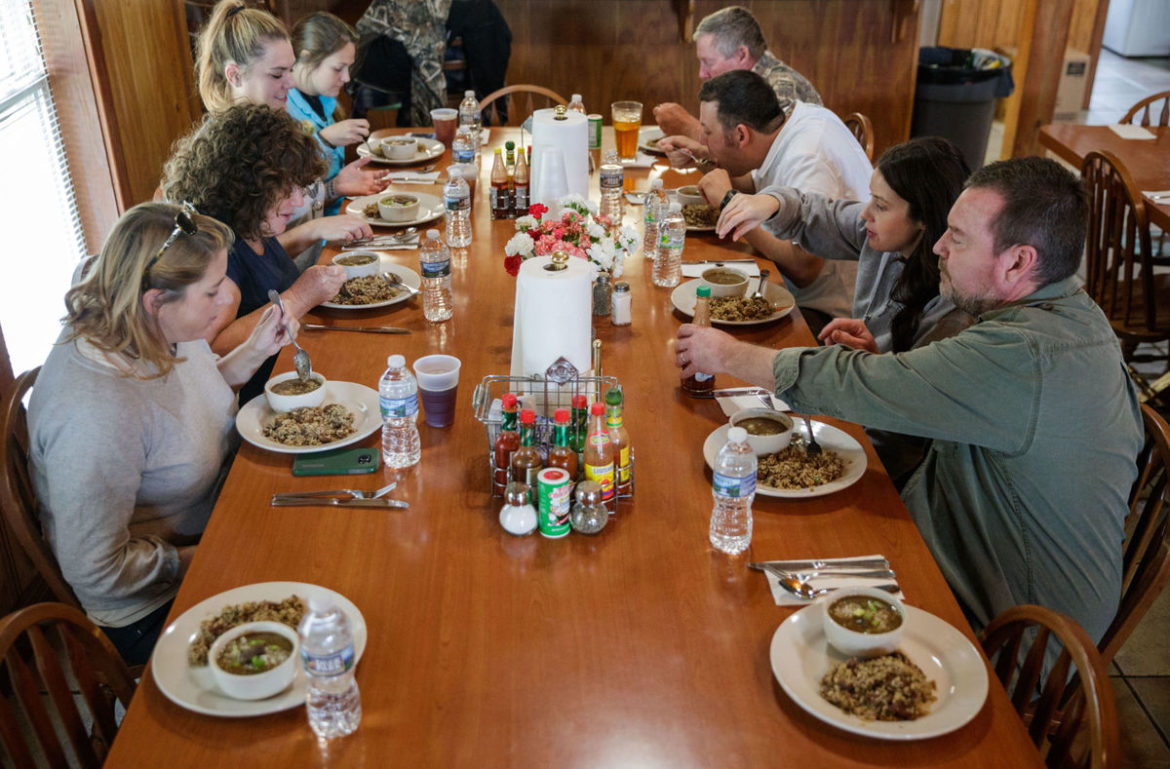
One evening this summer, a group of New Orleans chefs gathered at the Southern Food & Beverage Museum in Central City with a challenge: Prepare and cook Asian carp, an invasive freshwater fish that has wreaked havoc on Louisiana’s wetlands and waterways.
Staring down the haul of freshly caught carp, the chefs were tasked with turning the bony, so-called trash fish into something diners would find delicious. It wasn’t easy.
Cleaning Asian carp happens to be extremely labor-intensive. The large fish, which can grow up to four feet long and weigh up to 110 pounds, has an unusual bone structure that makes it difficult to fillet.
“I think the main issue has to do with actually processing it,” said Carmo’s Dana Honn, who made smoked carp fritters with his share. “It does take a while, but personally I felt like it was worth it; it’s got a really mild flavor, firm flesh and is very clean.”
“I have a responsibility to save my own wetlands. … It’s my heritage, it’s my culture, and it’s my livelihood.”—Chef Isaac Toups, Toups’ Meatery and Toups’ South
In the ongoing effort to save Louisiana’s disappearing coast, a group of coastal restoration advocates and scientists are targeting a surprising ally: Chefs.
The June event, held by the Culinaria Center for Food Law, Policy and Culture and co-sponsored by the Restore the Mississippi River Delta campaign, was part of an effort to familiarize chefs and diners with different species of freshwater fish and to build support for the state’s plan to rebuild the coast.
The Restore campaign, a coalition of environmental groups including the National Wildlife Federation, supports the state’s plan to use river diversions to rebuild Louisiana’s sinking wetlands.
The massive diversions will channel water — and the silt and sand suspended in it — from the Mississippi River into nearby wetlands. Over time, the sediment will build up in the bays, rebuilding wetlands and curbing further erosion.
Those diversions are key to the state’s comprehensive effort to stabilize its coastline and protect coastal communities from hurricane storm surge. Even with the plan, Louisiana is projected to lose 2,800 square miles in the coming decades.

The plan has some vocal opponents; fishermen, shrimpers and oyster farmers are among the loudest. They’re worried the freshwater pouring from diversions will decrease the salinity of bays and fishing grounds, pushing their target saltwater species farther offshore.
Hence the effort to build a market for freshwater species that don’t turn up as often on local menus.
Lance Nacio, a shrimper and owner of Anna Marie Shrimp in Montegut, comes from a long line of fishermen and hunters who made their living off the waters along Terrebonne Parish.
An advocate for environmentally responsible fishing methods, Nacio has seen the coast change dramatically over the years. When hurricanes Katrina and Rita and then the BP oil spill devastated family-run fisheries in the area, he invested in onboard freezing plates to ensure fresher-tasting shrimp.
The method had been used in commercial fisheries elsewhere, but never before in the Louisiana shrimping industry. It has helped Nacio stay competitive. His boat essentially doubles as a processing plant, where the shrimp are frozen and packaged within an hour of being caught.
Still, he worries about the future of his business and for fishermen who depend on saltwater species being nearby.

“I think we’re looking at some leaner ways ahead,” Nacio said. “If fishermen don’t wise up to it and try to figure out a better way of making a living, then some of these guys are going to get forced out of the business.”
Even now, he said, it’s hard to make the numbers work. If shrimp become scarce and shrimpers have to travel farther to catch them, “you’re going to strain these guys so far that they’re not going to make it.”
Despite the pushback, scientists involved in coastal restoration say diversions are key to preventing the southern third of the state from being consumed by the Gulf of Mexico within the next 70 years.
“If we don’t put the system back to some kind of natural order, the future for everyone isn’t there,” said Alisha Renfro, a National Wildlife Federation scientist.
“The coast we have today isn’t even going to be the coast we have 20 years from now, or 50 years from now,” she said. “It’s going to change, but we have the opportunity to decide what that might look like.”
She acknowledged, “There is a fear – it’s a fear of the unknown. … If you introduce freshwater into the system, everything is going to shift out a little bit.”
Environmental groups reaching out to chefs

The chef engagement initiative is still new, and organizers say they are working to get more chefs involved.
Chef Isaac Toups, of Toups’ Meatery and Toups’ South, was approached by members of the Restore campaign last year to help bridge the gap between conscientious, adventurous diners and those hesitant to leave their culinary comfort zone.
Now he speaks out about the benefits of freshwater species and coastal restoration efforts.
“I have a responsibility to save my own wetlands,” said Toups, a native of Rayne, just west of Lafayette. “It’s my heritage, it’s my culture, and it’s my livelihood. It’s where I make my living.”
When he can get them, Toups serves oysters from Murder Point Oysters in Alabama, where the bivalves are cultivated with an Australian long line method in which the young oysters are suspended in the water.
State fisheries have promoted methods like these, also known as off-bottom cultivation, as coastal erosion has made some traditional oyster grounds saltier and introduced more predators. The oyster seed, or “spat,” is grown in barrels and the oysters are suspended in floating cages, which protect them and allow them to grow more quickly.
The buttery oysters from Murder Point “cost a little more money,” Toups said. “But they’re super consistent. So as a chef and restauranteur, it makes sense on so many levels.”
Oysters, however, are familiar to Louisiana diners. Asian carp is not, and chefs are trying to figure out how to change that.
The invasive species, also known as silverfin, is native to Southeast Asia. It was introduced to U.S. waters in the 1970s to control weed and parasites in aquatic farms, but the fish escaped and rapidly reproduced. They spread throughout the Mississippi River and its tributaries, often squeezing out native fish and shellfish.
A host of YouTube videos shows the massive fish hurling themselves out of the water, even striking fishermen and boaters.
The connection between Louisiana’s wetlands and diners’ plates

“Diners are much more willing to try things now than they were 20 years ago. … Whatever we get in fresh, we sell it. We sell everything we get.”—Tenney Flynn, GW Fins
The rich bounty of seafood from the Gulf of Mexico is central to New Orleans’ tourist economy. Part of the challenge will be getting chefs to create demand for a species unfamiliar to most diners.
It’s been done before. Before legendary chef Paul Prudhomme introduced the world to his blackened redfish recipe, it was more or less considered a trash fish. Overnight, he created a demand that almost caused the species to go extinct.
The modern farm-to-table movement has ushered in a group of seafood chefs around the country who are experimenting with species once tossed aside, turning them into something diners have begun to ask for.
Sustainable fishing groups such as the Audubon Nature Institute’s Gulf United for Lasting Fisheries and Slow Fish, an offshoot of Slow Food New Orleans, work closely with local chefs to introduce diners to a variety of Gulf species.
Chefs active in the movement include Honn of Carmo, as well as chefs Tenney Flynn and Michael Nelson of GW Fins in the French Quarter. They serve sheepshead, once considered a trash fish, and occasionally lionfish, another invasive species.
“The market we’re targeting [is] going to be people from New Orleans that are willing to try anything. It’s up to me to create menus that they’re familiar with.”—Nathan Richard, Cavan
“Diners are much more willing to try things now than they were 20 years ago,” Flynn said. “Whatever we get in fresh, we sell it. We sell everything we get.”
The chef engagement initiative is still in the early stages, said Samantha Carter, who works for the National Wildlife Federation recruiting chefs for the effort.
Besides working with chefs to plan dinners that highlight carp and other freshwater species, several times a year members of the Restore campaign take chefs on flights and boat trips so they can see how freshwater diversions have built land.
“It’s the first small step towards a lot of steps,” Carter said. “Our real goal is to talk about coastal restoration and to highlight all the different things that are in the marsh,” from freshwater to saltwater.

The Restore campaign hopes that fishermen and chefs will eventually incorporate a host of freshwater species in their menus, including alligator gar, bowfin (also called choupique), alligator, frogs, apple snails, freshwater drum (or gaspergou) and buffalo carp.
Chef Nathan Richard, the executive chef at the Uptown restaurant Cavan, grew up in Thibodaux, where alligator, choupique and gaspergou were commonly found in the Cajun bayous. While cooking at Kingfish restaurant in the French Quarter last year, he experimented with a number of alligator dinners, preparing it in myriad ways for diners unaccustomed to eating it outside of tourist-trap restaurants.
“If you tie it to something that people feel comfortable with, that helps,” Richard said. “Take, for instance, garfish tasso. People can tie to that pork tasso, and they’re willing to try it.
“I started making garfish balls — like boulettes — and people would come back and ask for it,” he continued. “Same with river catfish; people shy away from it because of the bloodline, but if you cook it in a courtbouillon, it takes away that gamey, muddy flavor.”
In September, Richard prepared a freshwater species dinner that featured carp, alligator gar and nutria charcuterie. It was a matter of trial and error to figure out how to make the dishes tasteful and visually appealing to guests.
“People will eat it; the question is just how to prepare it,” Richard said. “The market we’re targeting [is] going to be people from New Orleans that are willing to try anything. It’s up to me to create menus that they’re familiar with.”

The biggest obstacle to promoting freshwater species is supply. At the moment, no local seafood distributors deal in Asian carp — or alligator gar, buffalo carp, or many of the other freshwater species.
Without demand, there’s no need for supply. That’s why, Carter said, the chefs’ involvement is key. They hope diners are enthusiastic enough to create a demand for the fish, which in turn will spur commercial fishermen to add new species to their haul.
If these species catch on, it would likely spur legislation and catch limits. It’s unclear how economically viable and sustainable the practice will be.
“If we don’t do something bold and quickly, we’re going to lose all of this anyway,” Carter said, referring to Louisiana’s abundant seafood and the industries that rely on it. “Part of this work is really to start shifting this conversation from, ‘Is this going to happen?’ to, ‘When this happens, how do we adapt?’”


